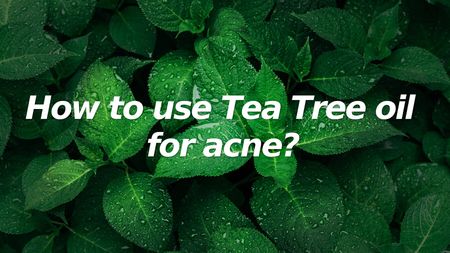
Acne is not just something that affects hormonal teenagers; adults can suffer too. It’s nothing to do with age, and there are a number of reasons for it. It could occur because of diet, hormone imbalances, skin bacteria, stress, and blocked pores. It could be a combination of these things, or just one of them, but the result is the same – lots of spots which not only look unpleasant, but can be sore and itchy too. Plus, for sufferers it is crucial to take extra care of their skin.
The truth is that tea tree oil may work – studies show that at 5% strength it can have an effect – but that it is often less effective than other medicines that are specifically designed to treat acne. However, since it is seen as a ‘natural’ product, many people still like to try it to treat their acne.
It is finding the 5% concentration that often proves to be a problem. In most chemists and supermarkets, the concentration tends to be listed as around 0.5 percent, which is not concentrated enough to make any difference to your acne (even assuming tea tree oil makes a difference at all). You might have better luck searching in health food shops, where the concentration could be as much as three percent but, again, it’s still might not be enough.
Be careful when hunting for higher concentrations of tea tree oil; choosing too high a concentration can make your skin even more irritated and, rather than having a soothing effect, could exacerbate the symptoms of your acne, causing inflammation and soreness.
How to use Tea Tree Oil?
First, use a gentle cleaning wash to clean your face. This will leave the skin as fresh as possible, and remove any dirt and dead skin cells that would otherwise block your pores, which can cause irritation. Exfoliation can also be beneficial, so long as you don't use products which might further irritate your skin. If you suffer from recurrent acne, washing your face with a specialist formula each day is important, whether you use tea tree oil or not.
Once you have washed your face, you can start to use tea tree oil. How much you apply and how you apply the oil will differ between brands and formulations. Some tea tree oils may need to be diluted into water before being used, others may be gels which can be applied directly to the skin. You should always check the label for instructions on how to use it.
A common instruction on how to use tea tree oil is to put a few drops – diluted if need be – of the oil onto a cotton wool pad and gently dab it onto your face. You should feel a soothing sensation when you do this. Alternatively, take some moisturiser and add a few drops of tea tree oil to it before applying it across your entire face.
If you notice irritation, or experience an allergic reaction to the oil, stop using it immediately. Wash away the product from your face and speak to your doctor for advice.
It is also possible to buy tea tree oil that is already mixed into a facial wash. These do tend to have much lower concentrations, but can be a good way to calm the skin if your acne is particularly sore and painful. Some of these products may also contain exfoliation beads, which gently scrub the skin to remove dead skin cells, which might further worsen your acne.
There are many complimentary and natural "treatments" for acne, though they may not all work. Be sure to speak to your doctor or a dermatologist before using tea tree oil to treat your acne. Alternatively, your doctor may prescribe an anti-acne treatment that contains salicylic acid, which reduces oil production and skin shedding. You may find these prescription acne treatments provide more effective relief in a shorter space of time.
Before using any new skin product, ensure you perform a patch test to determine whether you are allergic to any ingredients. You should also consider speaking to your doctor or a dermatologist for advice on how you can reduce your acne symptoms in other ways, such as exercising, managing your stress or taking precautionary measures during certain seasons.






